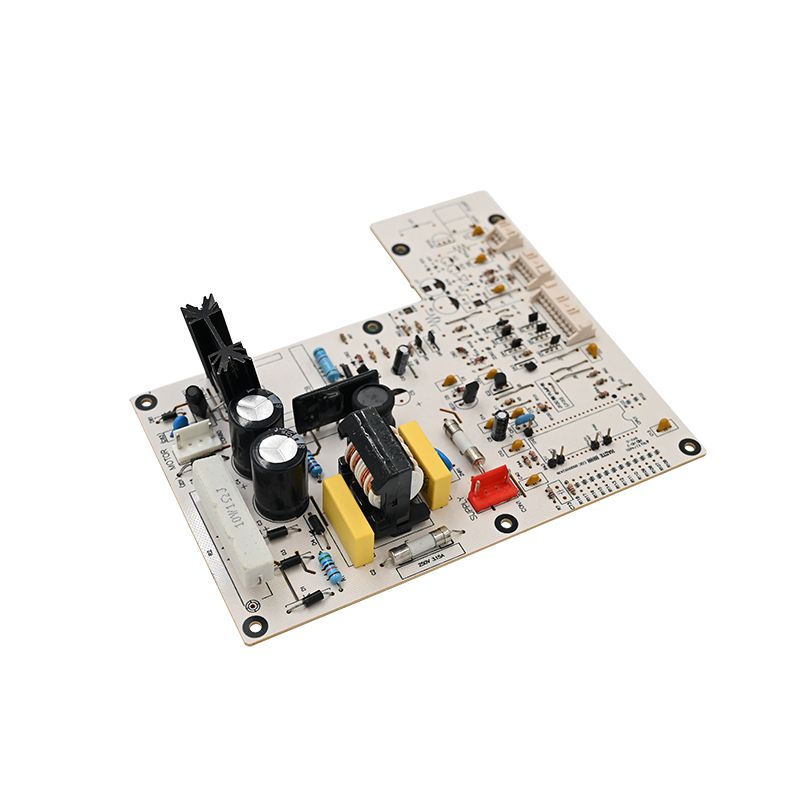Understanding Water Dispenser PCB
2024-11-05
Water dispensers are essential appliances in homes and offices, providing easy access to clean drinking water. At the heart of these devices is the Printed Circuit Board Assembly (PCBA), which plays a crucial role in their operation. In this blog, we’ll answer some common questions about water dispenser PCBAs to help you understand their function, importance, and features.
What is a Water Dispenser PCBA?
A water dispenser PCBA is a collection of electronic components mounted on a printed circuit board specifically designed for water dispensing systems. It includes various parts such as microcontrollers, sensors, relays, and connectors, which work together to control the dispenser’s functions, including heating, cooling, and water flow.
What functions does the PCBA perform in a water dispenser?
The PCBA in a water dispenser is responsible for several key functions:
1. Temperature Control: It regulates the heating and cooling elements to ensure that water is served at the desired temperature.
2. Water Flow Management: The PCBA controls the pumps and valves that manage the flow of water from the reservoir to the dispensing tap.
3. User Interface: It facilitates the interaction between the user and the dispenser, allowing users to select different water temperatures or dispense water.
4. Safety Features: The PCBA incorporates safety mechanisms such as overheating protection and low water level detection to prevent malfunction and ensure safe operation.
5. Power Management: It manages the power supply to different components, optimizing energy usage and enhancing the efficiency of the water dispenser.
What are the key components of a water dispenser PCBA?
A typical water dispenser PCBA consists of several critical components, including:
1. Microcontroller: The brain of the system that processes input from the user and controls other components based on programmed instructions.
2. Sensors: Devices that monitor various parameters, such as temperature and water level, providing feedback to the microcontroller.
3. Relays and Switches: These components control the on/off operation of heating, cooling, and pumping systems.
4. Connectors: They provide electrical connections to other parts of the water dispenser, ensuring that signals and power are transmitted effectively.
5. Power Supply Circuit: Converts the main voltage supply into the appropriate levels needed for different components.
Why is the PCBA important for water dispensers?
The PCBA is crucial for the operation of water dispensers for several reasons:
1. Efficiency: It enhances the efficiency of water heating and cooling, ensuring that users receive water at their preferred temperature quickly.
2. Reliability: A well-designed PCBA ensures that the water dispenser operates reliably over time, minimizing the risk of breakdowns.
3. User Experience: By providing intuitive controls and feedback, the PCBA enhances the overall user experience, making it easier for users to operate the dispenser.
4. Safety: Integrated safety features help prevent accidents and ensure safe usage of the appliance.
5. Smart Features: Modern PCBAs can include smart technology that enables remote monitoring and control through mobile applications, adding convenience for users.
What are the challenges associated with water dispenser PCBAs?
While PCBAs are essential for water dispensers, they also face several challenges:
1. Environmental Factors: PCBAs must be designed to withstand moisture and temperature variations, as water dispensers are frequently exposed to water and humidity.
2. Durability: Components must be robust to ensure longevity, especially in high-use environments like offices or public spaces.
3. Cost: High-quality PCBAs can be expensive to produce, impacting the overall cost of the water dispenser.
4. Complexity of Design: As dispensers incorporate more features, such as touch controls or smart connectivity, the complexity of the PCBA design increases, requiring more sophisticated manufacturing processes.
How can manufacturers ensure the quality of water dispenser PCBAs?
To ensure the quality of water dispenser PCBAs, manufacturers should consider the following practices:
1. Testing and Validation: Implement rigorous testing procedures, including functional tests, environmental tests, and longevity tests, to ensure that PCBAs meet required specifications.
2. Quality Materials: Use high-quality materials and components to enhance the durability and reliability of the PCBA.
3. Design for Manufacturability (DFM): Apply DFM principles to simplify assembly and reduce the potential for defects during production.
4. Continuous Improvement: Regularly review and update design and manufacturing processes to incorporate new technologies and address any identified weaknesses.
What future trends can we expect for water dispenser PCBAs?
The future of water dispenser PCBAs may include several exciting trends:
1. Smart Technology Integration: More water dispensers will feature IoT capabilities, allowing users to monitor and control their dispensers remotely via mobile apps.
2. Energy Efficiency: Advances in power management technologies will lead to more energy-efficient designs, reducing operational costs and environmental impact.
3. Enhanced User Interfaces: Touchscreens and voice-controlled interfaces may become more common, improving user interaction and convenience.
4. Sustainability: Increased focus on environmentally friendly materials and production processes will lead to greener PCBAs, aligning with global sustainability goals.
Conclusion:
The PCBA is a vital component of modern water dispensers, enabling them to function efficiently and safely while enhancing user experience. Understanding the role and significance of PCBAs helps consumers appreciate the technology behind these essential appliances. As innovations continue to shape the future of water dispensers, we can expect even smarter, more efficient, and more user-friendly designs in the market.



